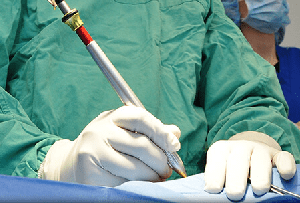Cosmetic Surgery
Cosmetic Surgery
Dermatologic surgery encompasses a variety of procedures aimed at diagnosing and treating skin conditions, including skin cancers, cosmetic concerns, and reconstructive needs. From simple excisions to complex grafting techniques, dermatologic surgeons employ both traditional and advanced methods to achieve optimal outcomes while prioritizing patient safety and aesthetic results.

Mohs Micrographic Surgery
Procedure Steps
- The surgeon removes visible cancerous tissue.
- The removed tissue is immediately examined under a microscope.
- If cancer cells are still present in the margins, another layer of tissue is removed and examined.
- This process repeats until no cancer cells are visible under the microscope. This process repeats until no cancer cells are visible under the microscope.
Benefits
High cure rates, particularly for skin cancers with irregular borders or those located in critical areas like the face.
Minimizes the removal of healthy tissue, preserving cosmetic and functional outcomes.

Excisional Surgery
Procedure Steps
- The surgeon marks the area to be excised.
- Local anesthesia is administered
- The lesion is excised with a scalpel, along with a margin of healthy tissue.
- The wound may be closed with stitches or left to heal on its own, depending on the size and location.
Benefits
Effective for removing various types of skin lesions, including benign growths and some skin cancers
Provides a histological sample for accurate diagnosis and assessment of margins.

Laser Surgery
Procedure Steps
- The area to be treated is cleaned and marked.
- Local anesthesia may be administered.
- The laser is used to precisely target and destroy the lesion or unwanted tissue.
- Cooling techniques may be employed to minimize discomfort and prevent damage to surrounding tissue.
Benefits
Precise and targeted treatment, minimizing damage to surrounding healthy tissue.
Can be used for various dermatologic conditions, including removing birthmarks, tattoos, and certain skin cancers.

Cryosurgery
Procedure Steps
- Liquid nitrogen or another cryogen is applied to the lesion using a cryospray or applicator.
- The freezing temperature destroys the targeted tissue.
- The area may blister and eventually scab over as it heals.
Benefits
Non-invasive and relatively painless.
Effective for treating superficial skin lesions such as warts, actinic keratoses, and some early-stage skin cancers.

Electrosurgery and Curettage
Procedure Steps
- The area is cleaned and marked.
- Local anesthesia may be administered.
- The surgeon uses a curette (a sharp, spoon-shaped instrument) to scrape away the lesion.
- Electrosurgery may be performed to cauterize the wound and control bleeding.
Benefits
Simple and cost-effective.
Suitable for removing small, benign skin lesions such as warts and non-melanoma skin cancers.
Why Choose UniHealth for Dermatologic Surgery?
1
Leadership in Skin Health Care
Unihealth is a recognized leader in dermatologic surgery, offering a comprehensive range of surgical options and expertise for patients of all skin types and concerns.
2
Expert Dermatologic Surgeons
Our team consists of highly skilled dermatologic surgeons with extensive experience in treating skin disorders and performing surgical interventions.
3
Personalized Approach
We provide individualized treatment plans, ongoing support, and multidisciplinary care to address the unique needs of each patient and achieve optimal skin health outcomes.
4
Innovation and Excellence
Unihealth is committed to advancing the field of dermatologic surgery through continuous research, education, and innovation, ensuring the best possible results for patients.
